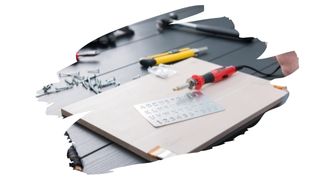Poplar wood is a fantastic hardwood for wood carving. Especially as it’s soft wood grain makes it ideal for intricate cuts.
But how well does that grain hold up when it comes to intricate burn lines? Or is Poplar wood a no-go when as a wooden canvas for pyrography?
Well, in this post, you will discover the four main things you need to check before you start burning into any piece of timber. You will also learn why Poplar is a surprisingly good choice timber for Pyrography.

This post may contain affiliate links to products that we receive a commission for (at no additional cost to you). Learn more here.
What Kind Of Wood Is Best For Pyrography?
Easily, the best type of wood needs to provide your drawings with a blank unobtrusive background. So, ideally, great pyrography wood choices will meet the following characteristics:
1). Light Color Grain
If you want your drawings to show up clearly, then a light pale canvas is what you need.
Dark woods, such as Walnut, will obscure those burn lines and mute the clarity of your shading work.
2). Uniform Grain
If that wooden canvas has a lot of very distinct contrasting grain, those grain lines will make your art look faded.
Related Post: Beginners Guide To Reducing Oak Grain Contrast (Explained)
3). Very Little Tree Resins
Tree sap/pitch is the resinous stuff trees produce to protect themselves from bug attacks or injury. And, some wood species (particularly softwoods such as Pine and Cedar), contain an excessive amount of tree resin.
Related Post: Can You Apply Polyurethane On Pine Wood?
That excess resin content can create an excessive amount of smoke if you were to burn these sap-saturated timbers.
But, worse still for your art, tree sap can boil and bubble over as you burn into the wood. And that bubbling sap will ruin your shading work — and blur fine lines.
Nevertheless, if an otherwise sap-saturated wood has been kiln-dried, then it can still be suitable for pyrography.
And why is kiln-dried wood the exception? Well, because the sap content in kiln-dried wood will have evaporated during the super-heated milling process.
Related Post: Is Kiln Dried Wood Safe Enough To Use For Gardens And Landscaping?
4). Non-Toxic Wood / No Chemical Content
The lumber of certain tree species, (such as the Yew tree), contain toxic compounds. So you should avoid burning them, as the last thing you need are toxic fumes filling your workshop.
Also chemically treated timbers should be crossed off the list too.
Pressure treated wood has been saturated with chemical wood preservatives that are best avoided. And even popular manufactured woods, such as Plywood and MDF, can contain formaldehyde-based glues in them.
Related Post: Is Plywood Really A Safe Wood For Pyrography?
What About Poplar? Is Poplar Good For Wood Burning Craft Work?
Poplar wood, (namely the Yellow Poplar which is a North American hardwood), is both affordable and easy to get a hold of in bulk.
And with its creamy light brown grain texture, it provides the perfect contrasting backdrop for dark burn lines. Plus, it’s grain texture is barely distinguishable, so it won’t affect the clarity of your shading work either.
Also, this low density wood is very soft, albeit not as soft as Basswood.
Related Post: Is Basswood A Good Wood For Pyrography?
So, it’s soft texture makes Poplar super easy to burn into. Which means that you won’t need to apply much pressure to make your mark (pun intended).
But, most importantly, Poplar does not contain toxic chemical compounds in it. So, you can feel free to use Poplar for wood burning art.
To Wrap Up, Here Are The 3 Key Takeaways From This Post…
- 1). Ideal pyrography wood has light pale unobtrusive grain texture.
- 2). But, you should always avoid burning into wood that contains toxic compounds or chemicals.
- 3). Poplar wood is a fantastic choice for pyrography. It’s a clean burning creamy light hardwood with next-to-no discernible grain texture.



